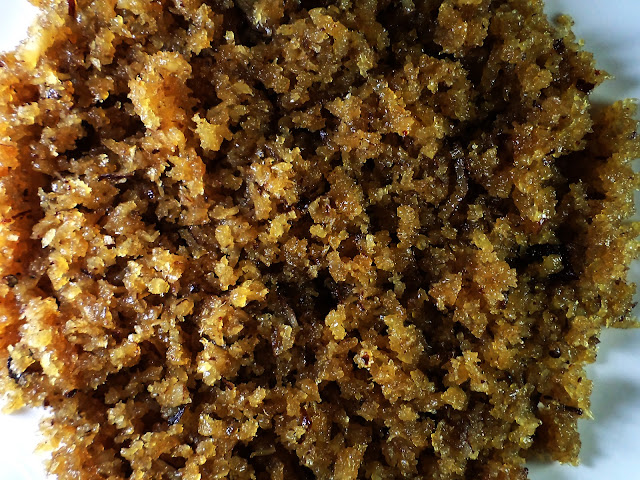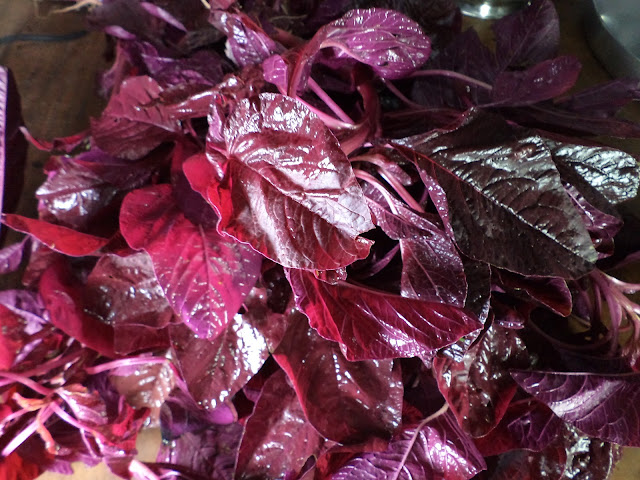MODAK
SWEET INDIAN RICE DUMPLINGS
Ingredients:
1) Roasted rice
powder – 500 ml.
2) Salt – ½ teaspoon
3) Water – 500
ml.
4) Coconut oil
– 2 teaspoons
To Make:
Set a wide wok on high heat. Pour in the water and the coconut
oil. Tip in the salt. As soon as it comes to a boil, tip in the rice powder. Stir
well with a flat ladle. Cover with a clean lid and switch off the heat.
After 30 minutes, open the lid carefully, dribbling the
condensed steam from the lid onto the dough. Knead the dough nicely and make
lime sized balls.
Flatten a ball into a thin patty with your fingers. If the
dough sticks to your fingers, grease them with a little coconut oil or dust a
bit of flour.
Gather the edges together and press to make a ball shaped
somewhat like a garlic pod or in any other shape of your choice. Steam for 10
minutes and serve either hot or cold. Children and adults alike love modak.
Notes:
1)
If a steamer
is not available, use a wok with 1½ inches of water. Place a perforated plate
or a flat bottom colander tightly above the water line. Arrange the modaks on the plate or on the colander
and cover with a lid. The heat of the steam is quite enough to cook the rice
jacket.
2) Traditionally, modak is prepared and offered to Ganapathi, the elephant God of the Hindus who is considered to be the destroyer of obstacles and the harbinger of auspiciousness. Modak is the favorite food of Ganapathi.
4) I have given the measure of rice powder not in grams but in millilitres because both the rice powder as well as the water needs to be of equal volume to get the right consistency. However, if the rice powder is too wet, you can dust a bit more powder and if it is too dry, you can sprinkle a few drops of water.
5)
If you are
buying roasted rice powder from the market, it is better to buy pathiri podi
rather than putte podi.
























